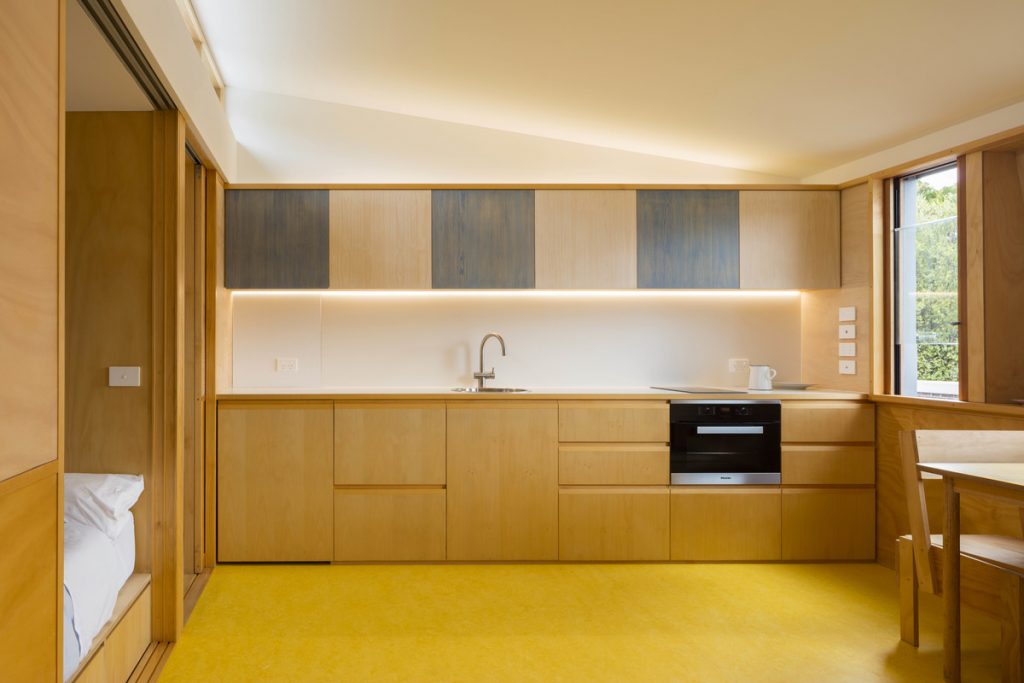
Laneway Studio Renovation by Architect Peter McGregor
The architects wrote their brief, which was to provide a better model for a laneway studio type. This type is getting more popular with many of the lanes built around metropolitan Sydney. It was on one level a NIMBY-like reaction to the generally poor quality outcomes that are the result of inadequate planning guidelines and poor quality architectural design. Driven by both personal and public interest, we have developed an alternative model for the laneway-studio type.
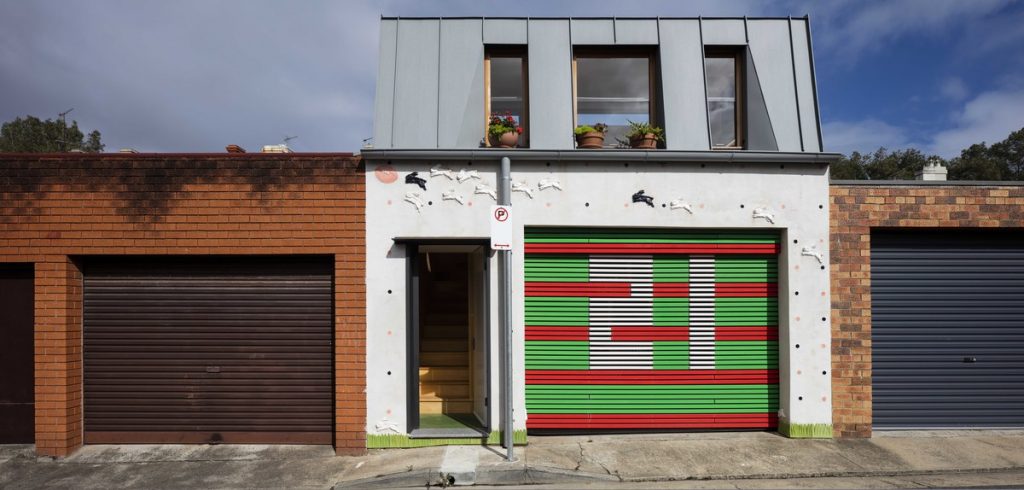
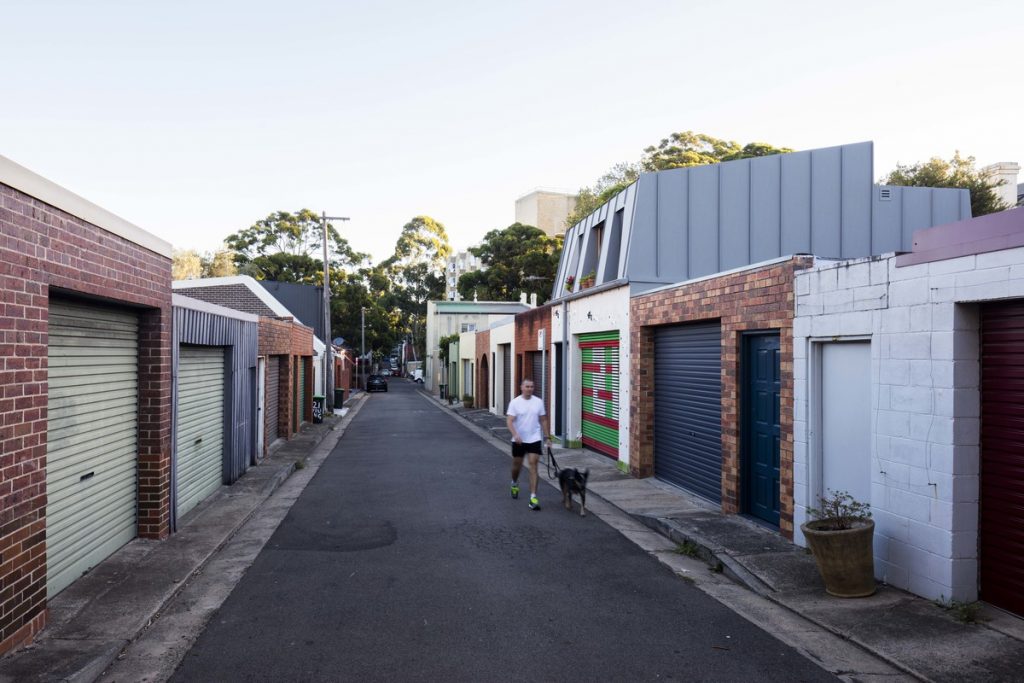
Urban Context
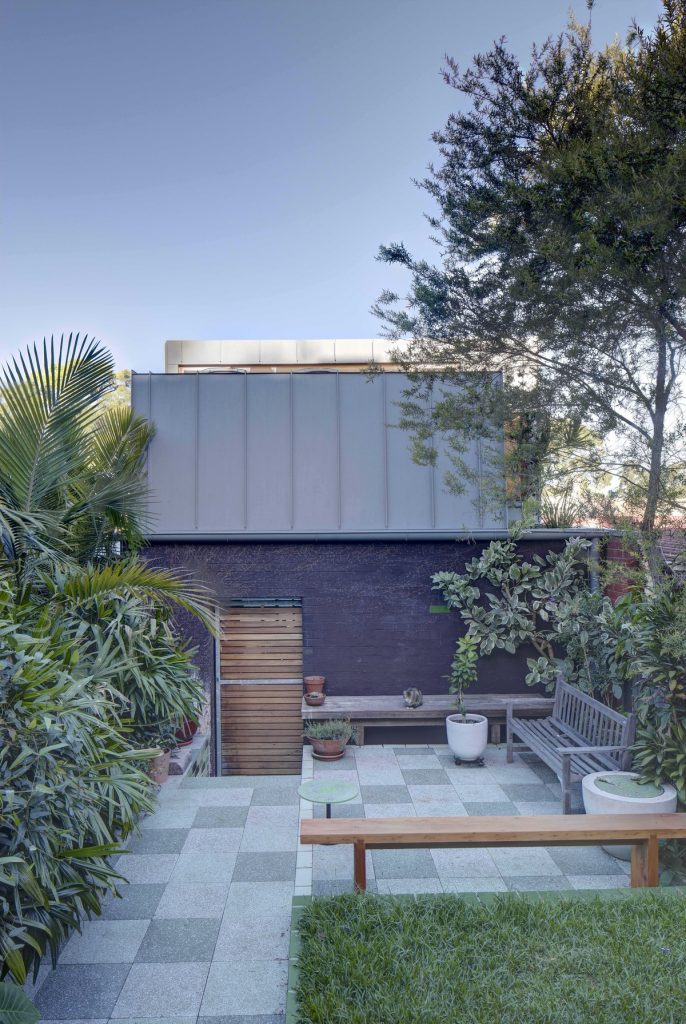
The laneway studio is a small project. However, when seen as a type, multiplied across 100s of lanes across the city it becomes a sizeable urban project. Doubling the height of existing frontages and adding another layer of use to a service lane transforms the road imbuing it with the qualities of a street. As the need for density and intensity of use grow, the 25sqm footprint is an increasingly important model for the fine-grained pedestrian city. A study of many inner-city neighborhoods showed the vast majority of laneway studios create a range of issues including, inadequate passive surveillance, privacy conflicts both public and private, unnecessary bulk and overshadowing to neighbors, a non-architecture outcome due to council’s “fear of urban form” and inadequate internal amenity.
Key Challenges
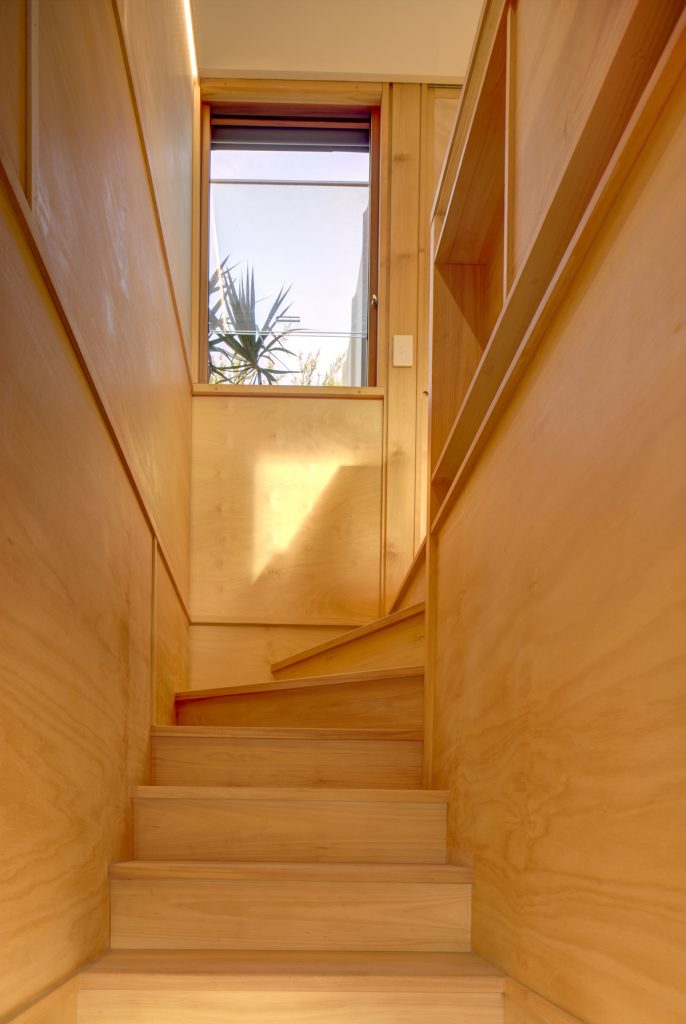
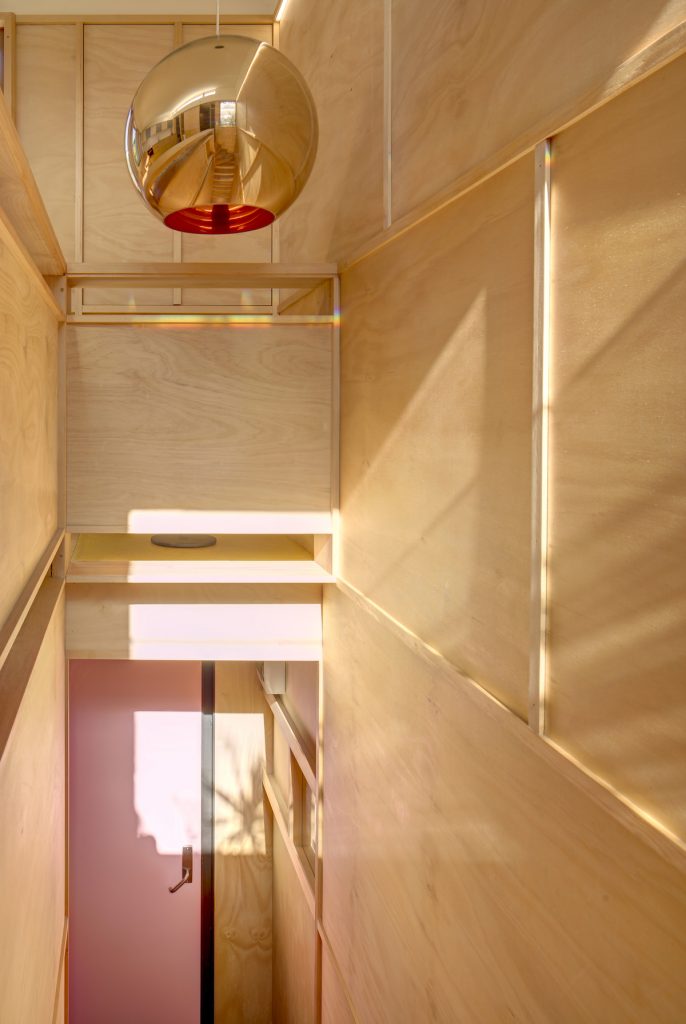
- The primary challenge was to subvert the council norm to create a new and better model. Council is encouraging an “Attic Roof form” with a dormer window. The attic roof so constrains the plan and volume that the dormer becomes a perversion of its type stretching from ridge to floor. The council should instead be looking at three controls.
- Be a good Citizen – The zero-setback line and small size of the dwelling means there is a dramatic intimacy of scale between the public and the domestic. The relationship must be at once both defensive and engaging, affording passive surveillance, while enabling privacy. The design of the window as the interface between the two scales is fundamental. Sills above 700mm, deep and angled reveals, exterior blinds and or shutters are all part of the toolkit.
- Be a good neighbor – At the rear, the terrace house yard becomes more like a court. Issues of bulk, overshadowing and privacy are critical to the 3 (court) yards adjacent to the development.
- Maximise internal amenity-space, light, air + privacy.
Solutions
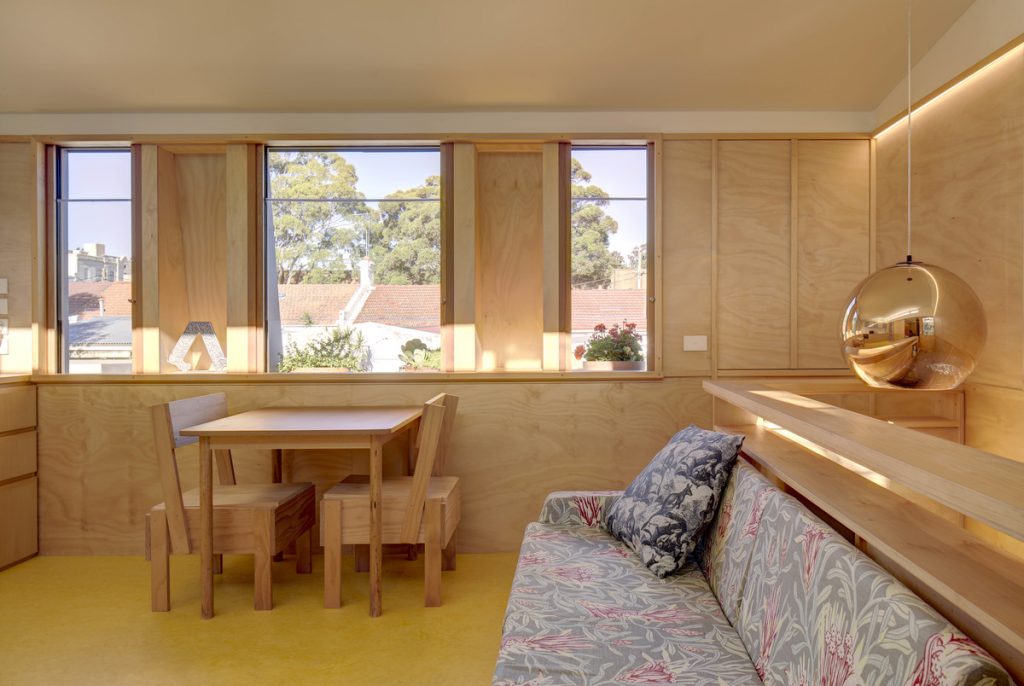
In negotiation with the council, a mansard roof form to the lane enabled us to build boundary to boundary, placing the bulk of the volume on the path. The layout of the stair is critical in the set out of the plan as it articulates the larger size of the street and the lower volume, containing bathroom and bedroom nook to the rear. At the top of the stair, the unit is completely removed, further reducing overshadowing for the southern neighbor and allowing a window at the top of the stairs and set well back from the rear.

The tight, efficient plan enables a living/dining kitchen room to overlook the lane, under a higher cross ventilated volume; a bedroom nook and bath that open and shut down to it. Storage is integrated throughout, under, behind and beside the niche.
Materiality
Architects used an aluminum standing seam as a robust and unifying treatment for the entire exterior, including walls, roof, guttering, and downpipes.
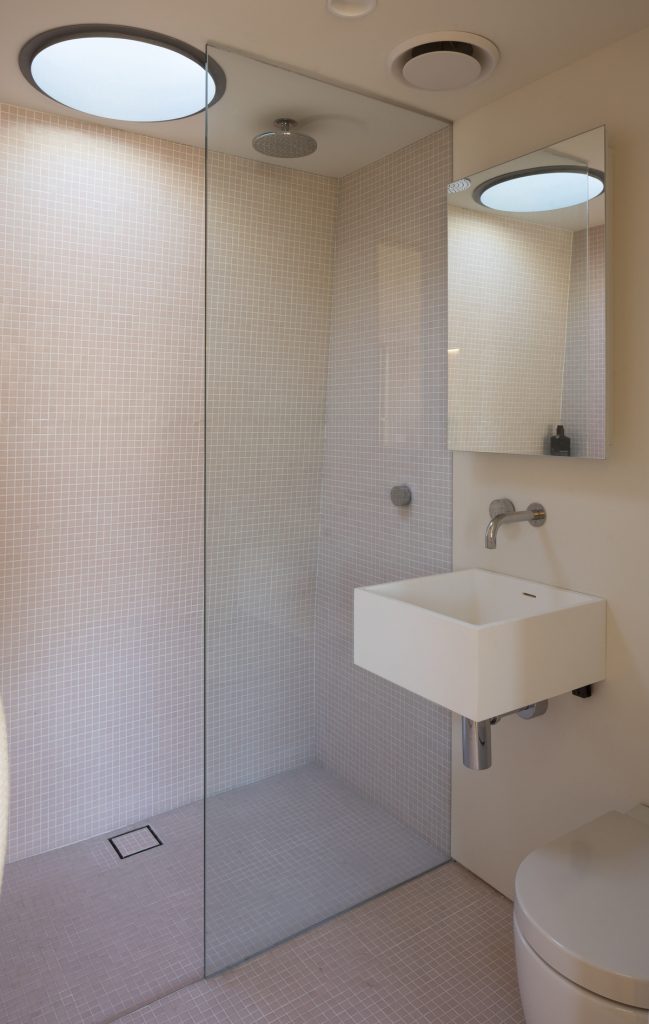
We wanted a similar unifying material for the interior that would be warm, robust, environmental and enduring. Australian Hoop Pine, with its warm honey colour, met this brief, and further it’s range of products, including substantial sections, plywood, and veneer panels, enabled us to design the interior, (including the stairs, wall linings, joinery, sliding doors and sills, heads and cover strips), as a unified, harmonious whole.
Several coats of Syntek’s Rubio Oil was applied with a rag and rubbed off. Artist’s pigments, including white, green and blue, were selectively mixed into the oil, to subtly articulate and highlight particular elements or spaces.
Cost/Value Outcome & Response to Client and User Needs
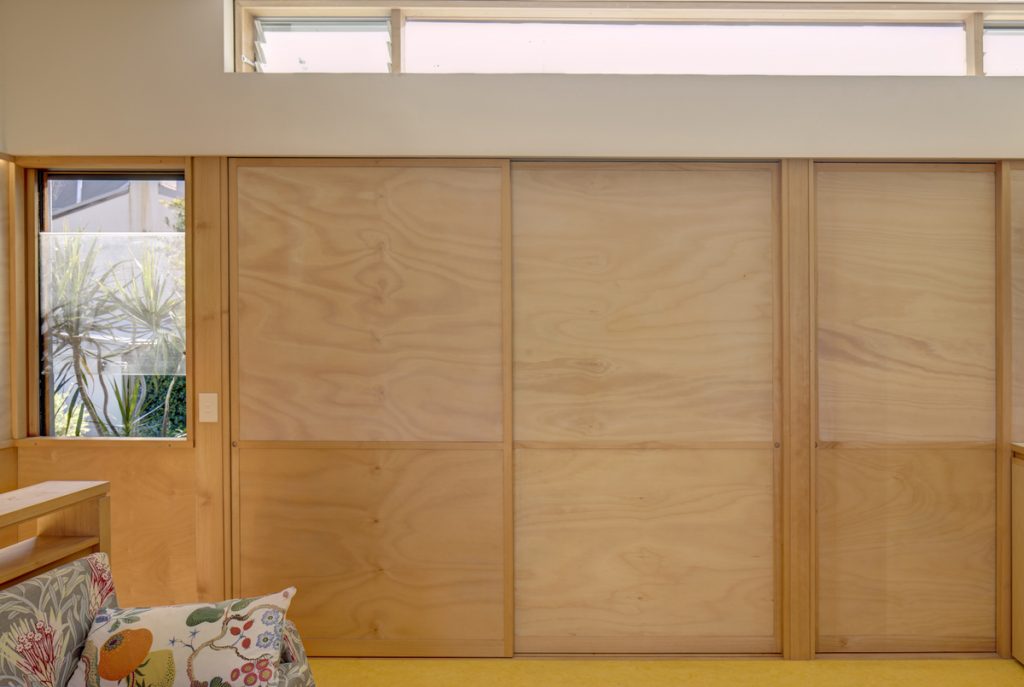
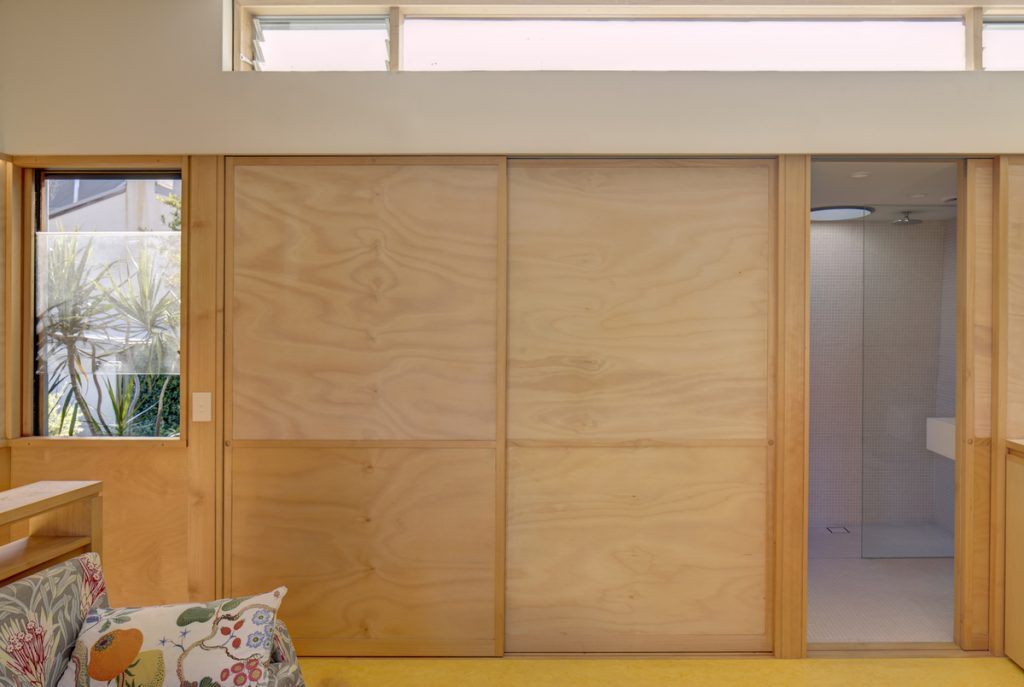
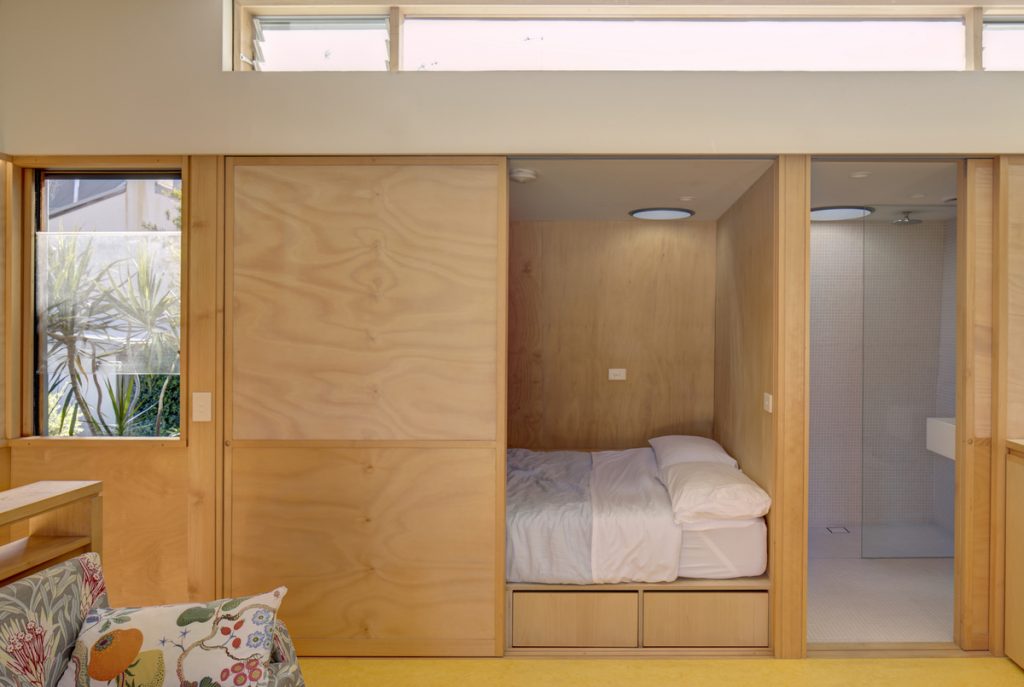
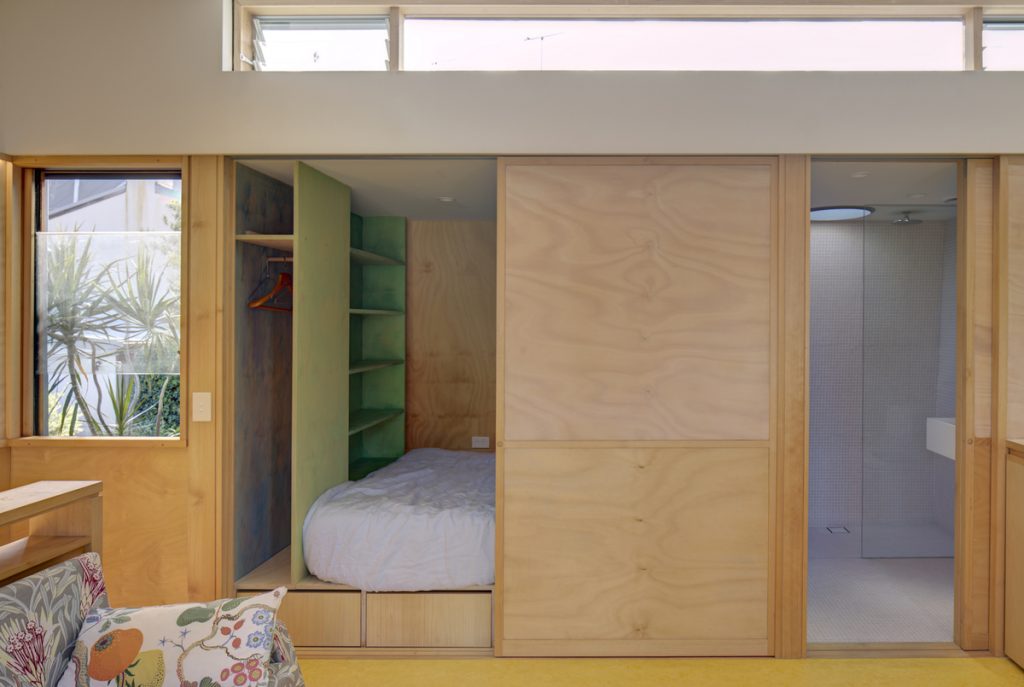
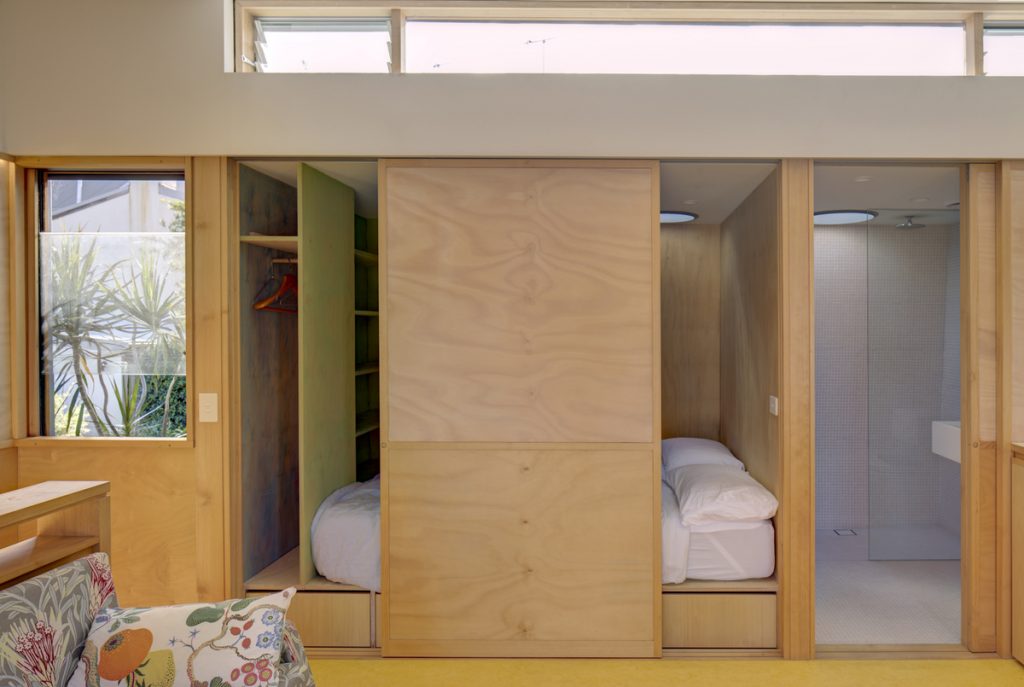
This type is very economical; no footings, lightweight structure, yet providing 25sqm housing for two people. In the mediation of bulk and privacy to the rear and the additional life on the lane, the development absorbs density, while transforming the service lane into more prosperous more complex urban place.
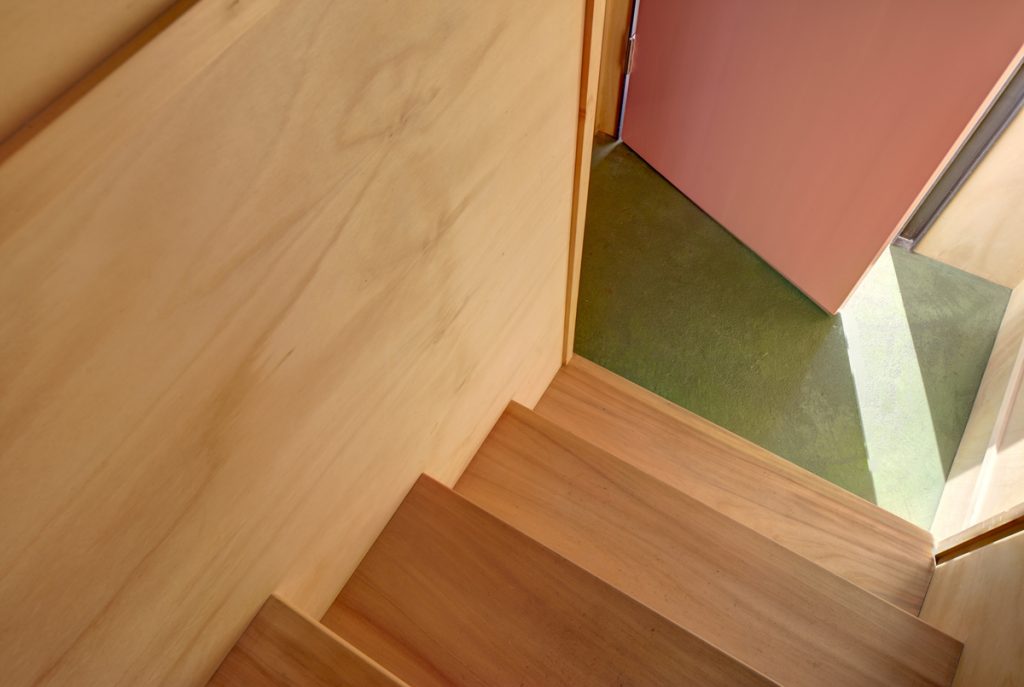
Sustainability
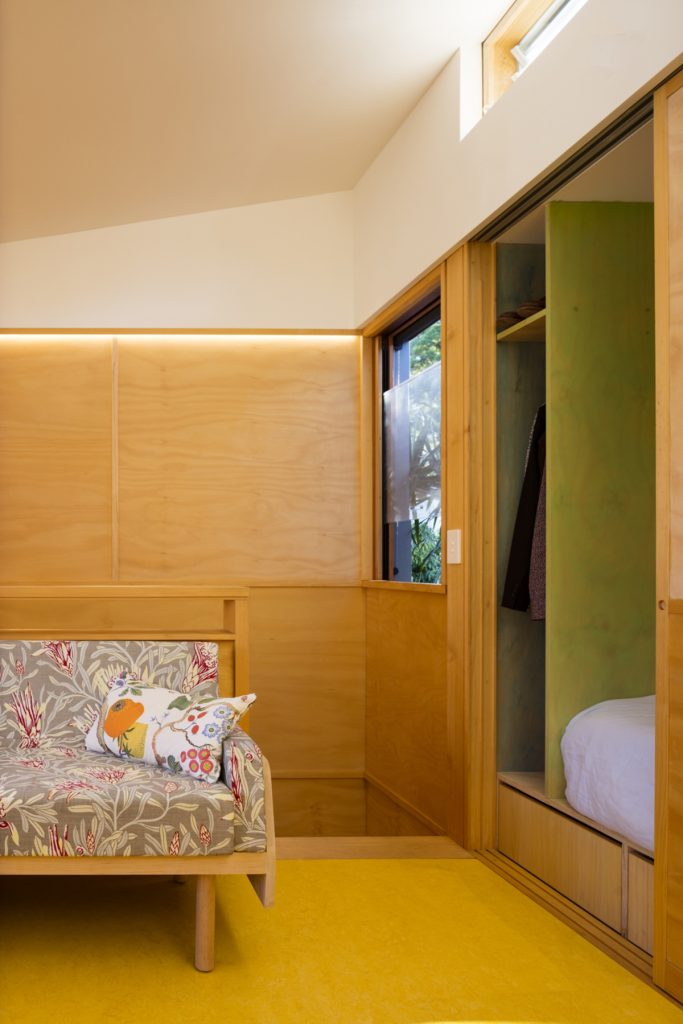
The project aspires to a sustainable model in the following ways;
• The plan creates a very efficient footprint of 25m2, suitable for 1 or 2 people.
• The project is located in an area of the “Walking City,” providing easy access to high-quality local amenities including, parks, pools, shops, and restaurants, as well as excellent public transport and places of employment.
• Windows to the east and west provide cross ventilation and ample sunlight, controlled by exterior blinds.
• All lights are LED.
• Architects choose the materials for their enduring, inherent, integrated or factory finish. I.e. The main interior cladding is Queensland hoop pine ply and substantial sections, from managed forests. The floor is linoleum (made up mainly of linseed oil).
• There is no air-conditioning.
McGregor Westlake Architecture
Photography by: Brett Boardman
